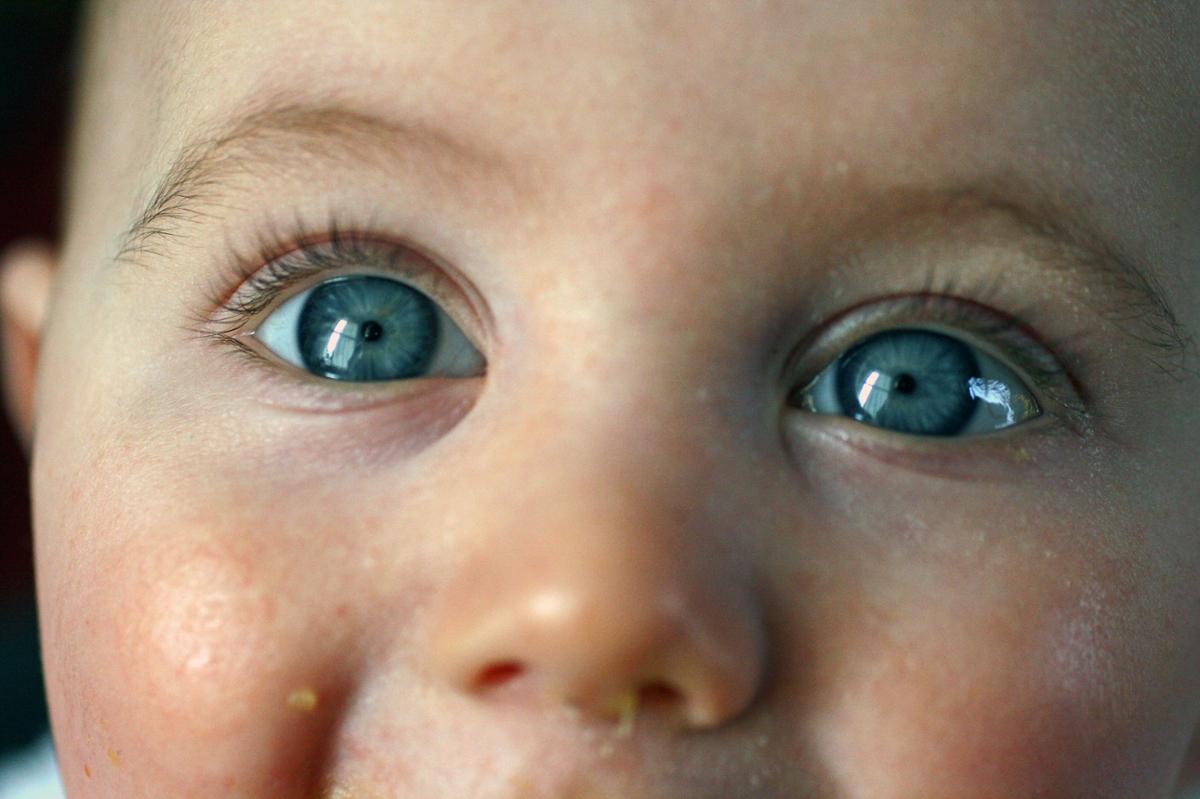
How do our eyes get their color? (Nikki Tysoe/flickr)
Did you ever wonder why newborn babies have blue eyes? Or how human beings get the various eye colors we have? What pigment in our bodies gives us green or gray or brown eyes?
The color of our eyes comes from melanin, the pigment that also colors our hair and skin. At birth, a baby's body isn't finished producing this pigment yet. Over the first year of life, as our eyes develop and our bodies produce more melanin, our irises gradually change from "baby" blue to their permanent color.
What produces the color in green or hazel or brown or black eyes? Actually, despite the many different colors that our eyes can have, the color of the actual pigment in all of them is exactly the same. Melanin only comes in one shade, yellow-brown.
The variations in eye colors come not from the *color* of the pigment in the iris, but rather from the *amount* of the pigment our iris produces. As more melanin is produced, the eye's color changes from light blue to dark blue to green to hazel to brown.
You might be wondering why newborn babies' eyes are blue, rather than some other color, like pink or white. Actually, at birth, our irises don't have much color at all. In nature, things that don't actually have color, like water or the sky, often look blue. That's because blue is the most easily "scattered," or reflected, color of light in the spectrum, like nature's "default" color. Before our irises produce melanin, they don't reflect any color, so, like the sky, they look blue, too.









